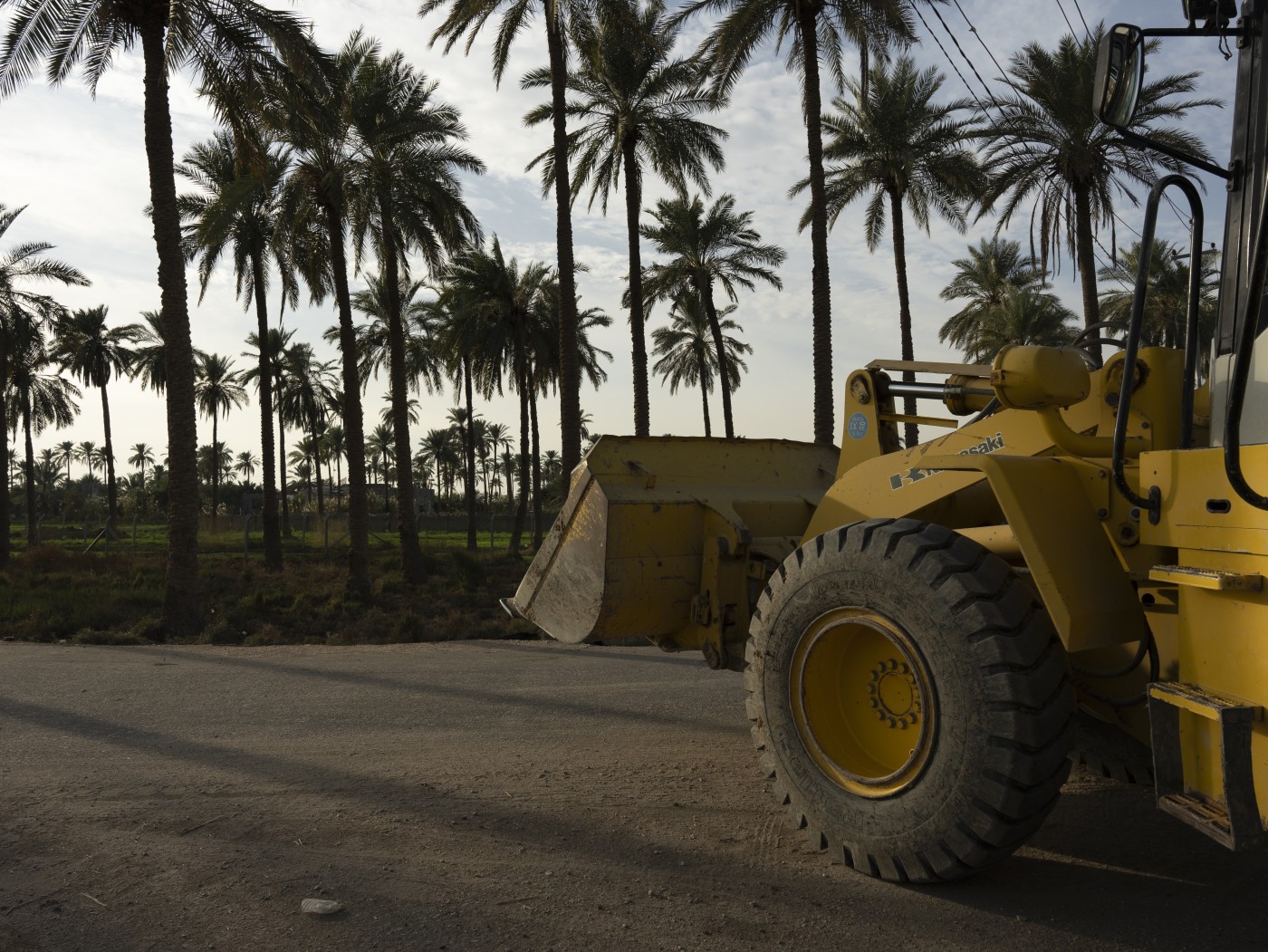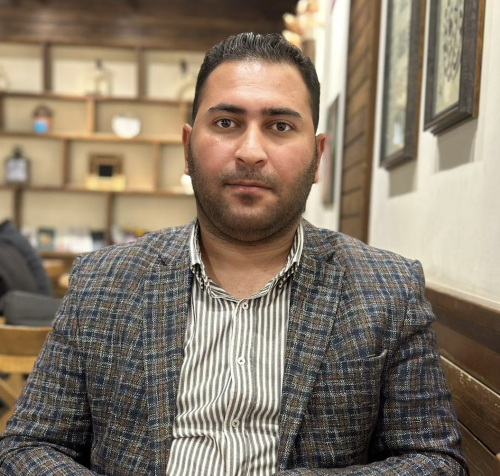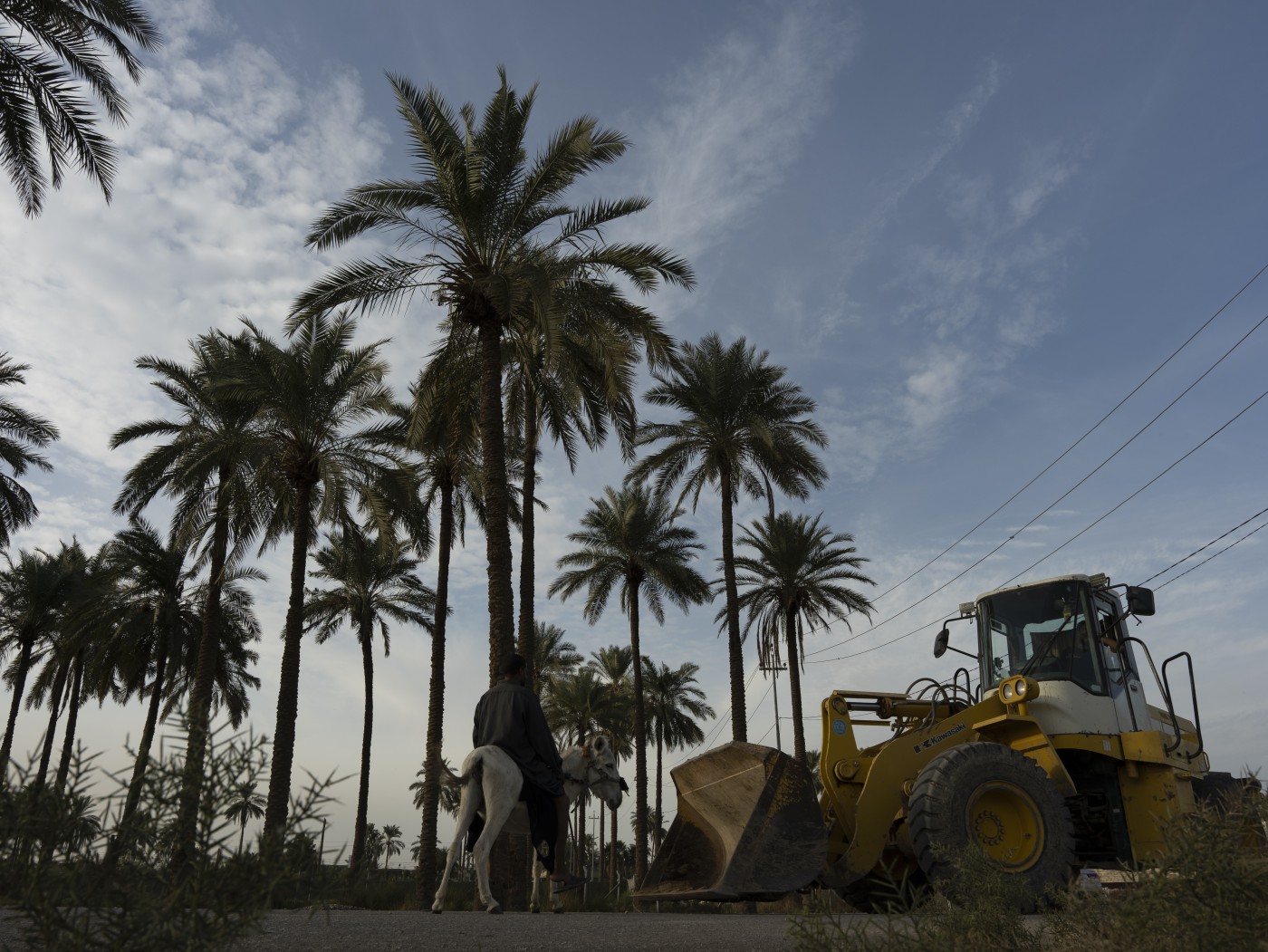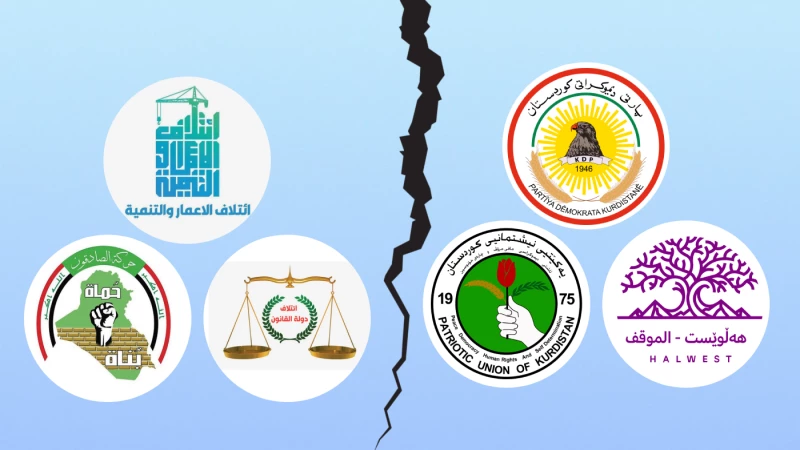In the last days of his life, my grandfather treated palm saplings with immense tenderness when plucking them from their “mother”. He would frequently advise others to preserve the largest number of roots possible at the bottom of the young date palms.
My grandfather was keenly aware he would not live to see them bear fruit but he knew well that the city’s stability and identity depended on them.
This palm tree was planted before your father was born, my grandfather used to say. And this is my mother’s palm tree, may God have mercy on her, he would add while pointing at a palm tree echoing the lines on his forehead.
My grandfather was born in 1919 and died in 2021. He did not understand climate change as it relates to desertification and drought. Nor had he heard about its impact on the rest of the world.
Nonetheless, he continued to plant date palms and other trees, using his ablution water to provide them with loving sustenance even when his days on this earth were numbered.
Ethics ‘not learned from books’
These ethics of giving he did not learn from a book by Paul Kurtz or anyone else who might recommend giving without expecting anything in return, in the manner of “they sowed and we ate”.
He learned simply by observing the scenes in front of him as he performed ablution next to trees near his home, making sure not to waste water. He learned these ethics from his work in agriculture and the stability it requires and provides.
My grandfather learned ethical behaviors from those who practiced them, passing them down from one generation to the next.
The Frenchman Pierre Bourdieu tells us, in line with the cognitive field theory, that individuals who form a group within a certain profession are in a reciprocal relationship with the circle around them: to the extent that they impose their morals and perceptions on it, they are in turn imposed upon with the same.
If groups are stable, they act in an ethical way towards the land and the crops in line with nature and the public interest. If this stability is disturbed, the result will inevitably be chaos and loss of identity.
Palm, almond and apple orchards
This man, my grandfather, was among those who transformed barren land in Karbala. He worked on this from the beginning of last century until his death. His labors alone resulted in two thousand palm trees now bearing fruit. This made him a sustainable producer and a revolutionary of sorts.
Karbala’s orchards differ from land used for agricultural purposes due to their stability. There is nothing seasonable about them: they remain. Palm groves are the distinctive feature of these orchards, with their trees serving as a source of shade for humans as well as other trees.
Margaret Stefana “Peggy” Drower, an English historian focusing on the Middle East also known as Lady Drower, toured these orchards and described their trees in her 1923 book On the Banks of the Tigris and Euphrates.
She wrote of seeing the domes and minarets of Karbala from between the palm trees even when almost a mile from the old city, saying that the smell of the flowers took one’s breath away.
As a visitor approached the city, she continued, the trees became denser and apples and almonds shone out from among the palm trees.
Drower was describing the areas of orchards that surrounded the city in the form of a crescent at the beginning of the twentieth century, starting from the eastern part and passing through the north to the western part of the city.
These are the areas from which the orchards expanded. Thousands of acres in which date palms and other trees grew in the subsequent decades and became dense forests.
Until voracious giants attacked them.
Titans tramp on as desertification spreads
These orchards have historically represented the aesthetic identity of the city. The city rose in the middle of a crescent long surrounded by dense orchards. At the center of the old city are the shrines of two imams, a place of pilgrimage for millions of Shia Muslims and others every year.
Outside the city to the south is instead an area with no agriculture stretching into the desert. It was in this direction that the city’s urban planners intended expansion to take place.
Thus, the bulldozing of the orchards was neither “normal” nor part of an official plan to expand the city in line with development and population increase.
The historic orchards of the city were transformed into residential slums in one of the largest acts of environmental sabotage in our modern era. Perhaps the only thing that could be considered comparable in scale would be the act of draining Iraq’s marshes under the Baath regime.
Once corruption took hold of state institutions and militias got the upper hand, these orchards were savagely razed.
The act was done internally but under external control, managed by top businessmen. The Karbala local administration acknowledged only recently that what had happened was a disaster.
They claimed it was the work of “influential people” and the result of “a large influx” of people to the city.
Due to their proximity to the center of the old city, these orchards were prime real estate: ideal for investment and the building of hotels and Husseiniyas. This became abundantly clear after bulldozers uprooted the trees and a residential center rose in their stead, where it became fashionable for the wealthy to buy a plot of land near the two imams’ shrines.
Despite exorbitant prices, the residential area expanded and the sight of bulldozers became familiar.
Slums at the price of world capitals
Hundreds of orchards - more than a million palm trees, according to official statistics - and nearly five million other trees: all have now been converted into tasteless, unorganized residential blocks.
A visitor now sees thousands of small flats crammed into limited space, some on narrow streets more characteristic of very old neighborhoods than modern residential construction.
When you enter these densely populated areas, the sight that meets your eyes bears resemblance to the worst of Iraqi slums. The only difference being that they also have luxury hotels and Husseiniyas in front of them.
But these slums once held vast orchards of dates and fruits famed throughout the entire Middle Euphrates.
An average Iraqi with limited income cannot afford a plot of land here. Construction in them is not licensed. And, yet, prices exceed those of luxury villas in other countries.
There are two criteria that govern the market in these areas. The first is the proximity of these areas to the center of the old city; the second is the volume of economic investment in them.
These areas now contain hundreds of hotels and shopping centers, many of which belong to influential people.
Thus, the doors were flung wide open for more orchards to be razed.
Legal ‘scandal’
The laws of the Iraqi state, from its very founding, have always explicitly prohibited the conversion of orchards and agricultural lands into land for residential purposes.
They have also imposed deterrent penalties, since orchards represent national heritage and serve to ensure environmental equilibrium.
Orchards that have been around for over a century are protected from a legal standpoint.
The law only made rare exceptions, centering on the rights of the state itself to change their use for the public interest.
But these exceptions would not justify the destruction of 25,000 acres and the uprooting of a million fruit-bearing palm trees and millions of others from the orchards of historic Karbala.
The mayor of the city then claimed that the matter had been taken out of his hands and placed in those of the judiciary. And judicial procedures, of course, require time and often end with nothing more than a fine.
Green belt ‘turned into dust’
The city of Karbala borders the desert to its south and is one of the cities in the world most vulnerable to desertification, experts say.
A ‘green belt’ that was established to ward off desertification and on which more than seven million dollars were spent has become dust itself.
After the failure of this project, the establishment of which coincided with the beginning of a campaign to sabotage the orchards, Karbala lost the sole lung it had left to breathe with. Its historical orchards are now residential slums and its green belt bordering the desert is now dry and desolate.
Devastation meanwhile tramps on, crawling through the orchards not yet razed in the city and around it.
After the ‘giants’ finished destroying the city’s orchards, they quickly headed to these other outlying ones.
After Karbala governor Nassif al-Khattabi announced the formation of a committee to stop the fragmentation of agricultural lands, he opened a date warehouse in the middle of them.
This warehouse was built on the remains of a thousand date palms that were uprooted, in a similar manner to what Hussein Kamel did to other palm trees in Karbala in 1991 during the Shaabaniya uprising.
* The views, thoughts, and opinions expressed are of the author and do not represent those of The New Region.



 Facebook
Facebook
 LinkedIn
LinkedIn
 Telegram
Telegram
 X
X


